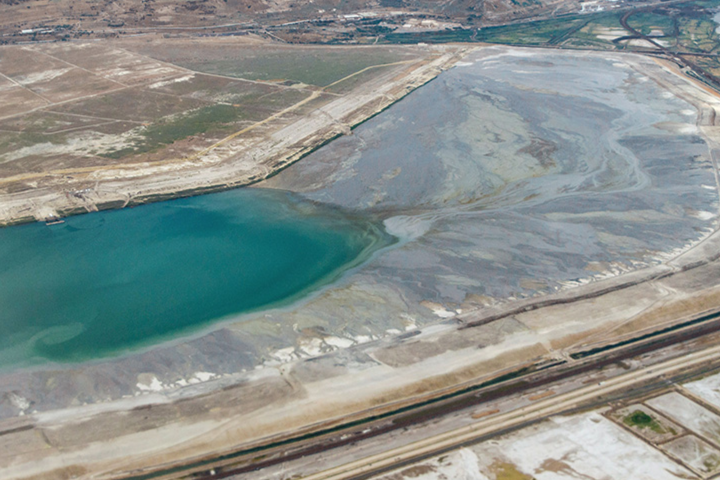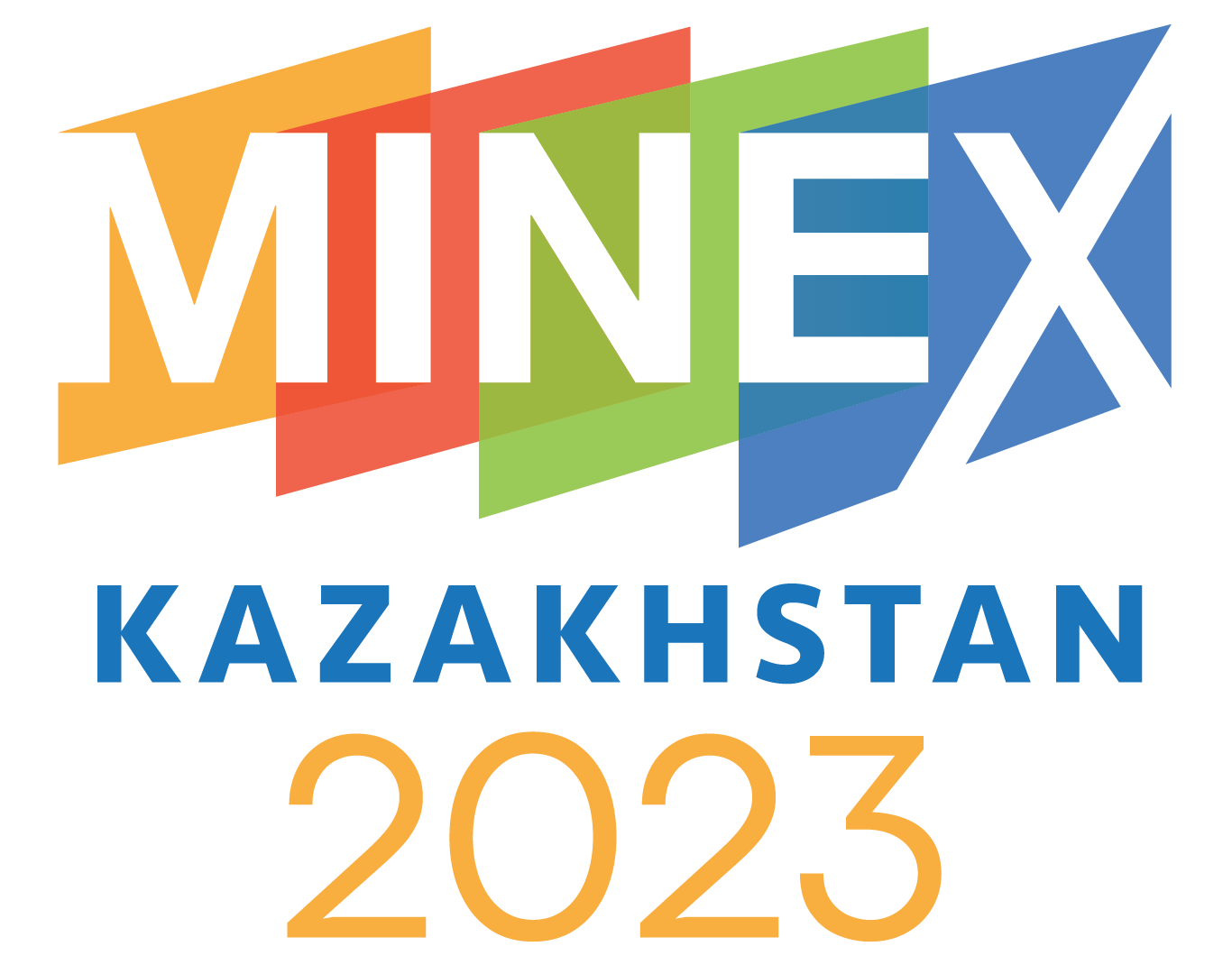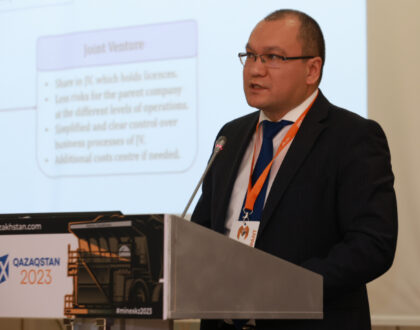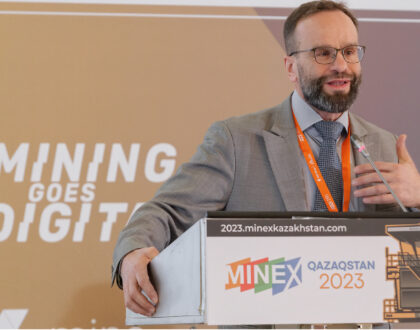Necessary evil: tailings managment issues in Kazakhstan

The expression “necessary evil” is very suitable for tailings. It is impossible to do without them in the mining industry, but they cause serious damage to nature. And if you take an irresponsible approach to their organization and operation, it will be completely catastrophic. Kazakhstan was lucky to avoid large-scale tragedies, but not completely without accidents.
From relatively recent incidents, the 2016 accident at the Kazzinc tailing dump in Ridder comes to mind, when long-term pulp stocks ended up in the Filippovka River, after which they spread to the waters of the Tikhaya and Ulba rivers.
According to the results of the audit of the environmental prosecutor’s office of the East Kazakhstan region, it was revealed that the damage from the incident exceeded 4 billion tenge, the Khabar TV channel reported, referring to the environmental prosecutor of the East Kazakhstan region Bakytzhan Izguttinov.
Until reclamation is carried out, even closed tailings are harmful. And the recovery process, due to its high cost, can take years.
So, in 2021, the reclamation of the Koshkar Ata tailing dump began in Mangistau, where waste from three plants, in particular, radioactive sludge from the uranium and oil industries, has been dumped since the times of the USSR.
Since then, restoration work has been suspended more than once, and again the pause was announced on January 6, 2023. The reason is the lack of funds, they will be enough to clean up only 1/3 of the area. This information was shared by the head of the department of the Department of Environmental Resources and Environmental Management, Yerbol Denov, in a thematic report on the Atameken Business News TV channel.
Both of these tailings are organized according to old technologies, and it remains only to carefully monitor such facilities and gradually engage in their restoration.
Today, however, to organize complexes from scratch, it is possible to apply a number of new technologies that can increase safety and environmental friendliness to modern requirements. Moreover, every year there are more and more relevant innovations in the extractive industry.
But even here it will not do without reservations. And the question is not even what technologies to choose for organizing a modern tailing dump.
And whether it is possible to apply them in the conditions of a particular region. Because “modern” does not always mean “universal”.
What if the rethinking and modernization of traditional methods also have a right to exist?
World fashion? Dry storage methods
It is sometimes impossible to ignore the information that more and more companies in the world are beginning to switch to the use of such technologies, whether it is paste thickening or storage of dry filter cakes. Moreover, the geography of their application is becoming wider: in the context of this topic, one can find references to the USA, Japan, Germany, Australia, and Turkey.
If we give more specific data, then, for example, the experience of Turkey is mentioned by the regional manager of MGM-Group LLC Sergey Selin and the business development manager of ISHIGAKI COMPANY, LTD. Fahri Sandikci in “Tails Dewatering and Dry Storage” in Mining Industry #5 2019.
Experts describe in their work the gold and silver mines of TÜMAD Mining Inc. in the Lapsek area. They also cited the example of precious metals mining at the Alamo Dorado mine in Mexico.
There are more relevant examples as well. In 2021, the Brazilian corporation Vale launched a filtration plant at the Vargem Grande iron ore mining and processing plant in the state of Minas Gerais, which makes it possible to obtain dry enrichment waste.
And this despite the serious high cost of technology. However, experts highlight a lot of advantages of the technique, which, according to them, justify such a cost.
“The introduction of dry tailings storage requires capital investments for the purchase of equipment, but this allows us to abandon the construction of tailings and almost completely abandon the use of additional water for the process, which in the long term reduces the operating costs of the enterprise.
The transition to dry storage makes it possible to completely abandon the operation of the tailings and leave up to 96% of water in the internal circulation,” Sergey Selin and Fakhri Sandiksi add.
“For example, in inaccessible or closed regions or seismically hazardous areas, dry tailings storage is optimal for a number of reasons. First, it saves a lot of space compared to traditional tailings. Secondly, the method guarantees minimization of environmental risks (for example, due to the collapse of a dam).
Thirdly, it allows you to reuse purified process water. And, finally, it meets the requirements of the legislation of most countries,” the representatives of Flottweg Moskau LLC, marketing manager Olga Dubrovskaya and project manager Sergey Marin, clarify in the article “Effective technologies for tailings dewatering”.
Neighboring countries are also beginning to gradually master dry storage: installing bowl-shaped paste thickeners or dewatering tailings.
“Another advantage of dry storage is projects in low temperature zones, which is extremely important for Russian realities. This method makes it possible to avoid freezing of liquid tailings at the stage of transportation along highways,” Olga Dubrovskaya and Sergey Marin note.
Are the benefits valid for Kazakhstan?
Despite the attractiveness of the method, experts remind that, first of all, it is necessary to rely on the specifics of the location, on the characteristics of soils and climate. After carrying out detailed calculations, it may turn out that all the advantages are simply impractical in other conditions.
“Any technology is selected at the stage of drawing up the corresponding project, taking into account the natural conditions of the region, the product being extracted, physical and mechanical processes, etc. This is partly why it is difficult for me to name practical examples of the use of dry storage methods at Kazakhstani deposits. Because we are dominated by the steppe, semi-desert and desert.
Can you imagine storing filter cakes in such a dry climate? Add here the fact that they need to be transported from the factory on special equipment. Both of these factors will contribute to the active process of dusting from hazardous waste, creating an unfavorable ecological situation. Of course, dust suppression systems can be used here, but they will not provide a 100% guarantee. Moreover, with an increase in the volume of waste, a large capacity of the systems will be required, which is also very expensive.
I will add that special equipment can damage the geomembrane that isolates the waste. And in this case, wetting of cakes from rain and snow, and hence the ingress of hazardous substances into the soil, cannot be ruled out,” commented a specialist from a Kazakh company – a manufacturer of geosynthetic materials.
In addition, industry experts repeat the thesis we mentioned at the very beginning: the storage of waste from the mining industry is harmful in itself, but inevitable. In this regard, it is important to understand that thickening and dewatering can be far from completely safe for the environment, and more traditional dammed basins can be safe if a number of requirements are met.
“Risks remain in any case. And they can be minimized by introducing modern technologies that increase stability and durability, in particular, geomembranes for waterproofing, lined pipelines, and dust suppression solutions. The introduction of such technologies does not require large investments at a time – the problem can be solved in the horizon of 5-10 years, ”said Sergey Kozhemsky, Deputy Production Director of Solidpipe System LLC.
Another guarantor of safety is environmental control. In the days of the Soviet Union, when a significant part of the tailings was created, the ecology was paid far less attention than today.
However, environmental legislation has become much more stringent in recent years. The relevant supervisory authorities periodically conduct inspections in the areas around the tailings, take water samples in the surrounding reservoirs and soil samples for examination. The results of laboratory tests will immediately detect even a tiny leak. Subsequently, fines will be colossal, which, in turn, also increases the responsibility of miners.
Geosynthetics: not a drop will leak
Today, the majority of miners around the world working with traditional “pools” isolate the soil of the base of the tailings using geosynthetics. We can say that they become mandatory in the management of the tailings. And this despite the fact that in the countries of the former USSR, geosynthetics began to be used relatively recently.
It is quite difficult to trace the evolution of the material in Kazakhstan in particular, because in the territory of the CIS countries, until recently, the good old technology of the “clay castle” was used.
In fact, it was the treatment of the bottom of the hydraulic dump (to isolate the soil from chemicals) with loam with a sand content of less than 15%. In the absence of other alternatives, this method was quite good: it provided good area filtration, but still not one hundred percent.
Nevertheless, the old method of “clay castle” in the domestic mining industry has not been completely abandoned. He perfectly “made friends” with modern geosynthetics, and in tandem they provide maximum soil insulation.
“It is very important to initially properly prepare the underlying layer. Preliminary work is carried out, including complete clearing of plants and compaction of the soil (a good compaction factor of 0.95 is required) so that the rock does not stick out anywhere. And already on the leveled loam, on the prepared base, a geomembrane is laid.
On the bed, you can use material of a smaller thickness and a little more on the slopes. In some regions, where there is a sharp temperature drop and the water in the pools freezes, a geomembrane of maximum thickness is used.
It is pre-cut, laid in parts and welded together, after checking the seams for strength with control and measuring equipment. But these are quite rare cases, ”said a specialist from a Kazakh company – a manufacturer of geosynthetic materials.
Different countries have different minimum service life of such material. The average minimum is 25 years.
And manufacturers of geosynthetics note that modern geomembranes can serve much longer, even 50 and 100 years. But only if a good-quality material with a well-thought-out composition is selected, which is subsequently correctly mounted on the bottom of the tank.
Also, experts emphasize that a high-quality geomembrane should not contain any secondary materials. For example, some unscrupulous manufacturers add chalk to the composition of the feedstock, which adversely affects the strength of the final product.
Reliable geomembrane is 100% made from primary raw materials – it is high-density low-pressure polyethylene with the obligatory addition of special components, including carbon black and black dyes. Only such a geomembrane will be resistant to ultraviolet rays. It has a high coefficient of ductility, which will allow the material to naturally narrow and expand with temperature changes and not crack.
Such material can even be used in chemical industry enterprises, in the waste of which there is a high content of especially aggressive components, such as sulfuric and hydrochloric acids, alkalis and chloride compounds.
So, competent waterproofing was carried out, but there remains one more potentially vulnerable place – slurry pipelines. In many ways, traditional tailings are not abandoned due to the high environmental friendliness of hydrotransport.
The pulp moves through closed pipes without any harmful emissions into the air.
Technological solutions and water are transported in the same way, which goes through several stages of enhanced filtration and is returned to circulation at the enterprise. This even pays for the fact that the pools occupy quite large spaces.
The increased load on the pipes just can lead to their wear. This mainly concerns those “branches” along which mining waste goes.
Such problems exist at some tailing facilities of the Republic of Kazakhstan. According to the report “Overview of the most problematic tailings in Kazakhstan” for 2018, posted on the website of the United Nations Economic Commission for Europe (UN ECE), such situations arose at the tailings of the Kostanay region.
“Problem issues are pipe ruptures, fistula formation, pulp leakage. As a result, flooded, silted passages to the slurry pipelines are not suitable for the movement of equipment serving the route, ”the report specifies.
“The tailing slurry is an abrasive material, and therefore, in the process of hydraulic transportation, abrasive wear of the pipe walls occurs. The pipe wall becomes thinner and the pipe loses its ability to withstand internal pressure. Sooner or later, a gap occurs at the thinnest point. And it always happens suddenly, because predicting the place of a breakthrough is an almost impossible task. I’ll explain why.
It is currently impossible to automate such control: there are no technical solutions for controlling the degree of pipe wear. The only available option is to check the pipeline “in manual mode”. Only the length of pipeline systems of tailing pipelines is sometimes tens of kilometers.
It will take a huge human resource from a solid team of flaw detectorists equipped with expensive metal thickness gauges. And even if suddenly someone decides on such a check, it still may not give a 100% result, since it is necessary to check every linear meter, ”Sergey Kozhemsky outlined the problem.
To minimize the risk of a force majeure pipe burst, the expert recommends installing lined pipelines with an internal abrasion-resistant coating. This is a more expensive solution, however, such pipes reinforced from the inside exceed ordinary steel pipes in terms of service life by 15-20 times. Experts also note that a one-time financial investment in durable pipelines can reduce operating costs in the horizon of 20-30 years.
“In the case of steel pipes, they need to be replaced after a couple of years if the slurry is highly abrasive. With less abrasive loads, the worn pipe is replaced after 5-10 years. Operating costs consist of dismantling the worn pipe, purchasing a new one and installing it, and after a while, dismantling it again.
That is, the cycle is repeated over and over again. Adding up all the numbers, we see that the amount of operating costs will equal the cost of a more expensive, but more reliable solution, in just 4-5 years. And this is without taking into account the costs of eliminating the emergency consequences of breakthroughs in tailing slurry pipelines, ”said the Deputy Director for Production of Solidpipe System LLC.
The problem of rapid wear of steel slurry pipelines during the transportation of thickened tailings is especially urgent, Sergei Kozhemsky adds. The abrasiveness of thickened tailings increases many times, and accordingly, the rate of pipe wear also increases. In this case, the technical management of the factory should definitely consult with specialists from companies that study the problems of abrasive wear and the production of lined pipes.
Having studied the specifics of the hydrotransport of tailings, they will be able to give a recommendation on what materials should be used to protect the slurry pipelines of the enterprise in terms of service life and economic component.
Available Height
It is impossible not to list a few more technologies that allow for more efficient tailing management.
The Kazakh mining industry is developing, new ore bodies are being explored, and innovations, as we wrote above, significantly increase the life of mining complexes. Therefore, there is often a need to build up screens and walls of dams of existing tailings. The same procedures are applied to older tanks, which, despite their long service life, still cope with their tasks.
“Problem tailings in the Karaganda region: active filling of the ash and sludge collector with ash and sludge pulp from the hydraulic ash removal systems of the CHPP-PVA and CHPP-2 of the Steel Department of AMT JSC, which has been in operation since 1960. This led to its filling in the volume of more than 94%.
Under the program “Building up the ash and sludge storage facility in 2017-2018”, a project is being implemented to strengthen the ash and sludge storage dam (90% completed). Since May 2018, work has begun on building up the crest of the dam to a mark of 101.3 meters, ”the entry from the report of the UN Economic Commission for Europe reads.
New solutions have also appeared in this direction. These include, in particular, earth embankment reinforcement systems. They are a modular soil reinforcement system, where the modules are arranged in layers. A gabion block is mounted in the front part, which can, among other things, be filled with local materials.
Such a system, according to experts, is more flexible and allows you to create both symmetrical and asymmetric dams. It is an alternative to reinforced concrete retaining walls. Often the technology involves the horizontal laying of geosynthetic tapes inside the compacted embankment to strengthen it.
The method can also be used when building tanks from scratch.
Don’t throw dust in your eyes
Also, with an increase in the service life of tailings and an increase in their volume, the amount of waste in the basins also grows. Depending on the materials being stored, tailings can cause dusting. It is often said that “the shores of dead lakes” are gathering dust.
“The problem of dusting is solved by treating the surface of the tailings with dust suppressants. The reagent creates a hard crust on the surface of the tailings and acts as a glue, connecting the particles of the micron fraction into large and heavy ones.
There are a number of dust suppressants on the market. Such reagents are made on the basis of synthetic materials or organic components. The second version of the composition is a safe natural material.
It also allows leveling the problem of the death of free-range animals if there are livestock farms in the area. Let me explain: animals come to the tailings in search of water and useful minerals, such as salt, lick reagents from the surface of the soil, as a result of which they get poisoned and die.
Organic dust suppressors can also be used on unpaved roads of the enterprise, which are used by heavy special vehicles. During the passage of transport, decent dust clouds are created, which adversely affect plants, the service life of automotive equipment, and the health of drivers. An organic dust suppressor can not only eliminate the problem of dust, but also act as a fertilizer for green spaces,” Sergey Kozhemsky added.
It is necessary to mount such material in a warm period, when it is in its original state, and with a slight overlap. This will also avoid cracking when the geomembrane is stretched in cold weather.
Operational requirements are detailed in the “Industrial Safety Rules for Tailings and Sludge Facilities of Hazardous Production Facilities”. Approved by the Order of the Minister for Investments and Development of the Republic of Kazakhstan dated December 30, 2014 No. 349.
The main requirements for the operation of the hydraulic dump are as follows:
- There is a need for advanced washing of beaches near the upstream slopes of the most critical pressure structures (the goal is to form a strong stubborn prism from tailings, which reduces the hydrostatic load on the dams and completely eliminates the wave effect of the clarified water pond on the embankment dam).
- Enveloping dams should be subject to regular (daily) inspections to detect subsidence, cracks, erosion, landslides, the exit of the drawdown curve to the downstream slope, etc.
- It is necessary to control the readings of piezometers and control marks with the entry of data in a special observation log.
- It is necessary to maintain a certain level of water on the surface of the tailings, especially in the final stage of operation.
- Water intake into shaft wells should be carried out from the upper horizons.
In order to avoid silting of mine wells when the level of tailings rises, water intake openings must be closed in a timely manner with stopors and sealed. The depth of water at mine wells should be at least 1.5 m.



